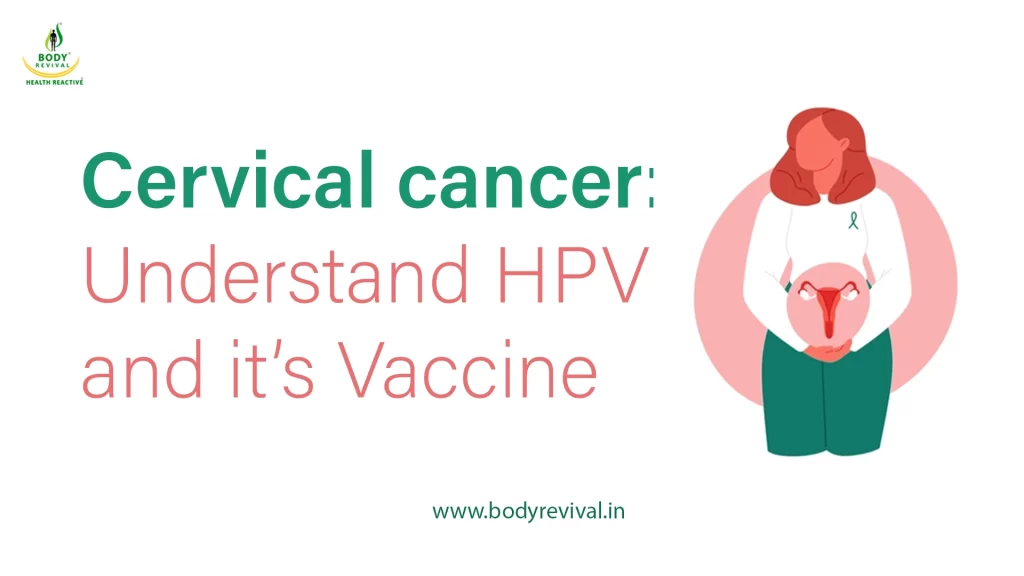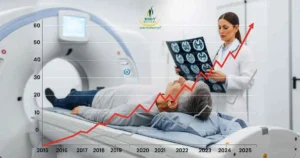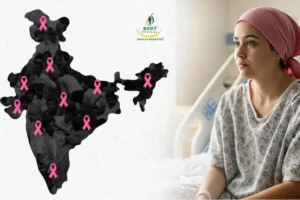Cervical cancer occurs in cells in the cervix which is the lower part of the uterus that connects to the vagina. In India, cervical cancer is the second most frequent cancer among women aged between 15 and 44 years.
India has a population of 511.4 million women ages 15 years and older who are at risk of developing cervical cancer.
According to current estimates, around 1, 23, 907 women are diagnosed with cervical cancer every year, and 77, 348 of them die from the disease. It is estimated that about 5.0% of women in the general population carry cervical HPV-16/18 infection at any given time, and 83.2% of invasive cervical cancers are caused by HPVs 16 or 18. – IOA/IRC HPV Center
It’s important to raise awareness about cervical cancer, especially in the most vulnerable section. It’s important to understand cervical cancer to raise awareness about it. Incidence rates may be decreasing, but it’s still the second most common cancer in women.
Understanding Cervical cancer
Cervical cancer begins when the cells in the cervix start multiplying quickly and uncontrolled. The Human Papillomavirus (HPV) is the leading cause of cervical cancer, a common infection transmitted through sex. It affects the private parts of both men and women, including the skin around the private area and rectum.
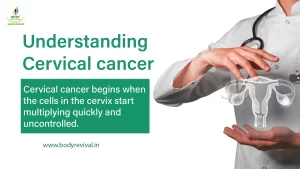
Experts classify HPV types as either less likely or more likely to cause cancer. According to research, about 13 types of HPV are linked to cervical cancer, and at least one is connected to cervix cancer. It’s important to understand cervical cancer and by understanding these connections helps us take steps to prevent and detect cervical cancer early.
HPV Vaccination
A vaccine exists to prevent the human papillomavirus (HPV) types responsible for the majority of cervical cancers. It also guards against the HPV strains that commonly lead to genital warts.
Risk factors of Cervical cancer
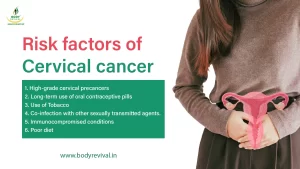
Several factors increase the risk of getting an HPV infection and its progression to cervical cancer. Co-factors that can influence this risk include:
- High-grade cervical precancers
- Long-term use of oral contraceptive pills
- Use of Tobacco
- Co-infection with other sexually transmitted agents.
- Immunocompromised conditions
- Poor diet
These factors contribute to the likelihood of HPV infection and its development into cervical cancer.
When to see a doctor?
It’s recommended to start getting checked for cervical cancer at 21 because there’s been an increase in cases due to HPV. In these tests, a doctor takes some cells from your cervix to check for HPV.
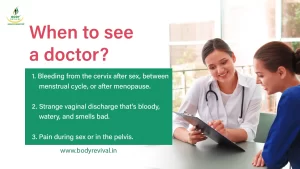
Usually, early cervical cancer doesn’t show any signs. So, it’s important to see a doctor if you notice any advanced symptoms like:
-
- Bleeding from the cervix after sex, between periods, or after menopause.
- Strange vaginal discharge that’s bloody, watery, and smells bad.
- Pain during sex or in the pelvis.
Conclusions
Cervical cancer cases have been on the rise in recent years. Globally, it is the fourth most common cancer in women, with an estimated 6,04,000 new cases and 3,42,000 deaths in 2020.
By understanding, staying informed, getting vaccinated, and catching any issues early, we can make progress and win in the fight against cervical cancer.

